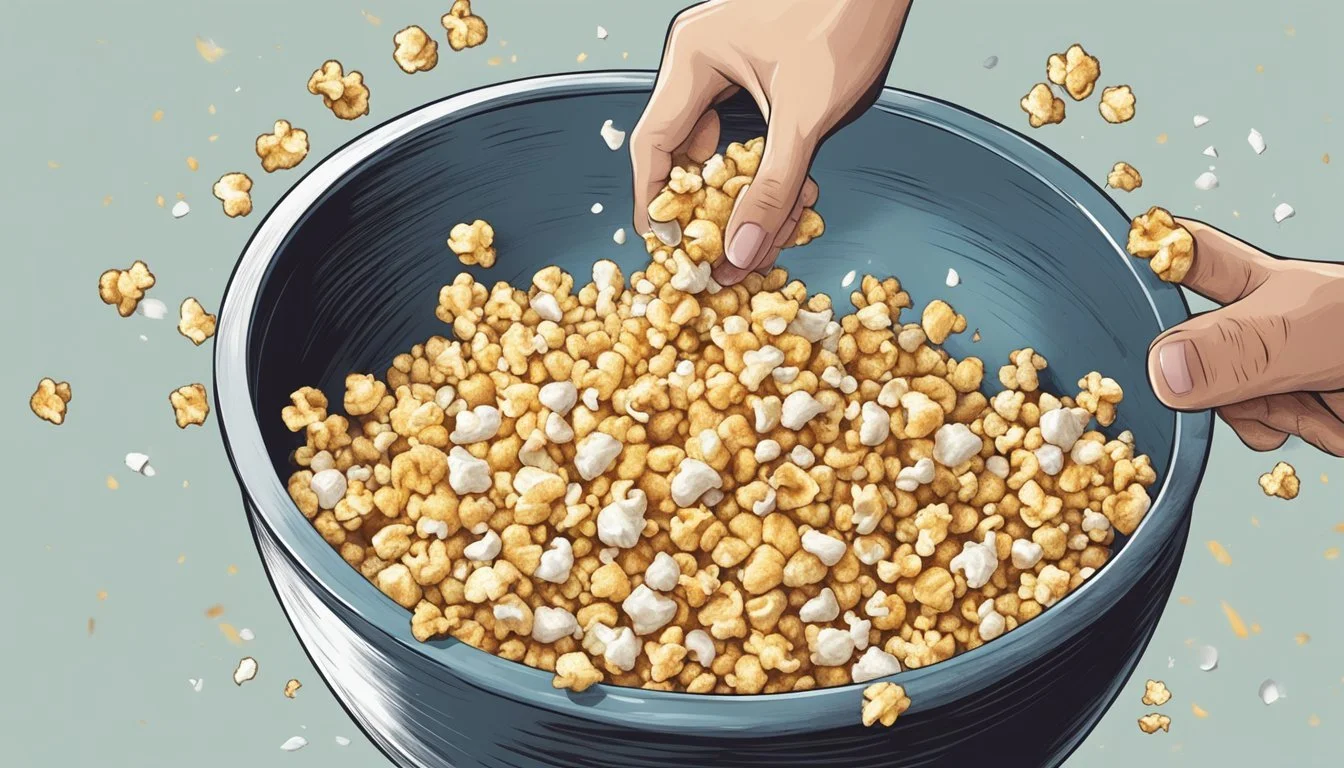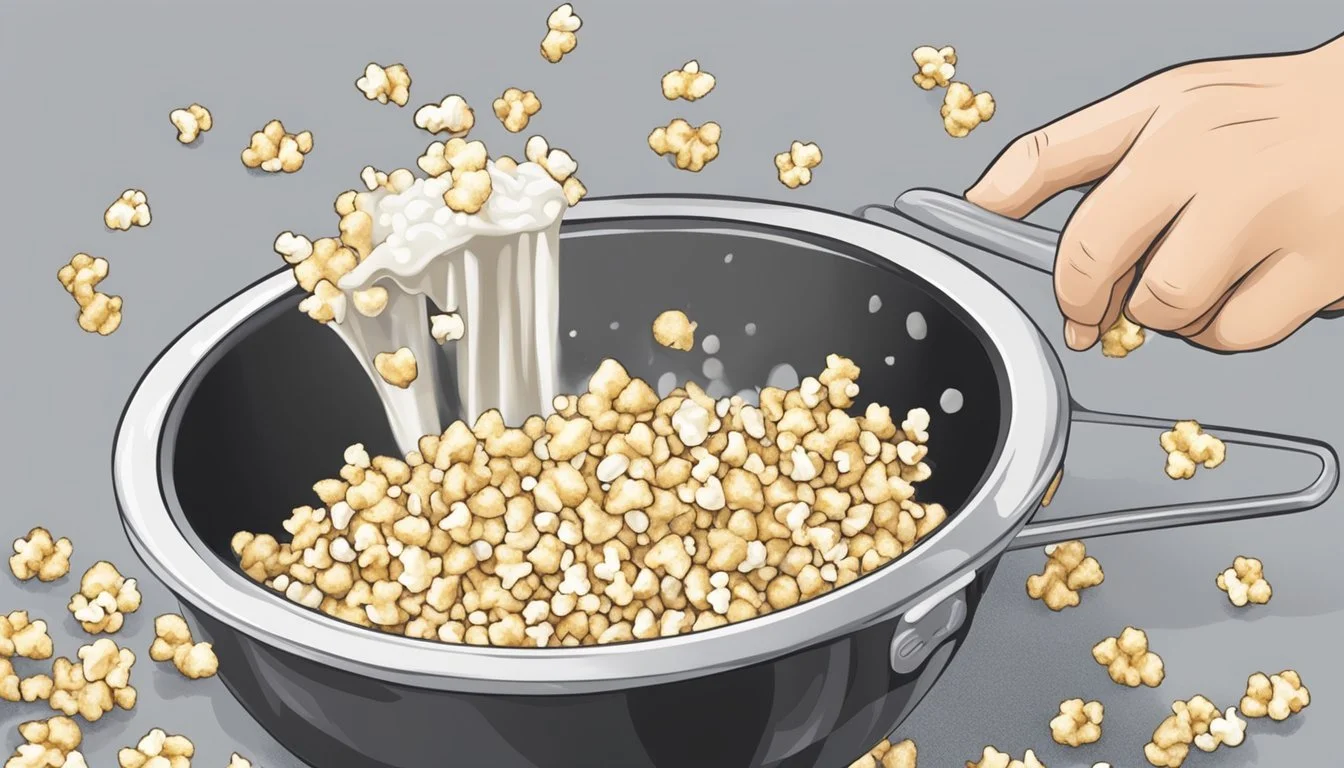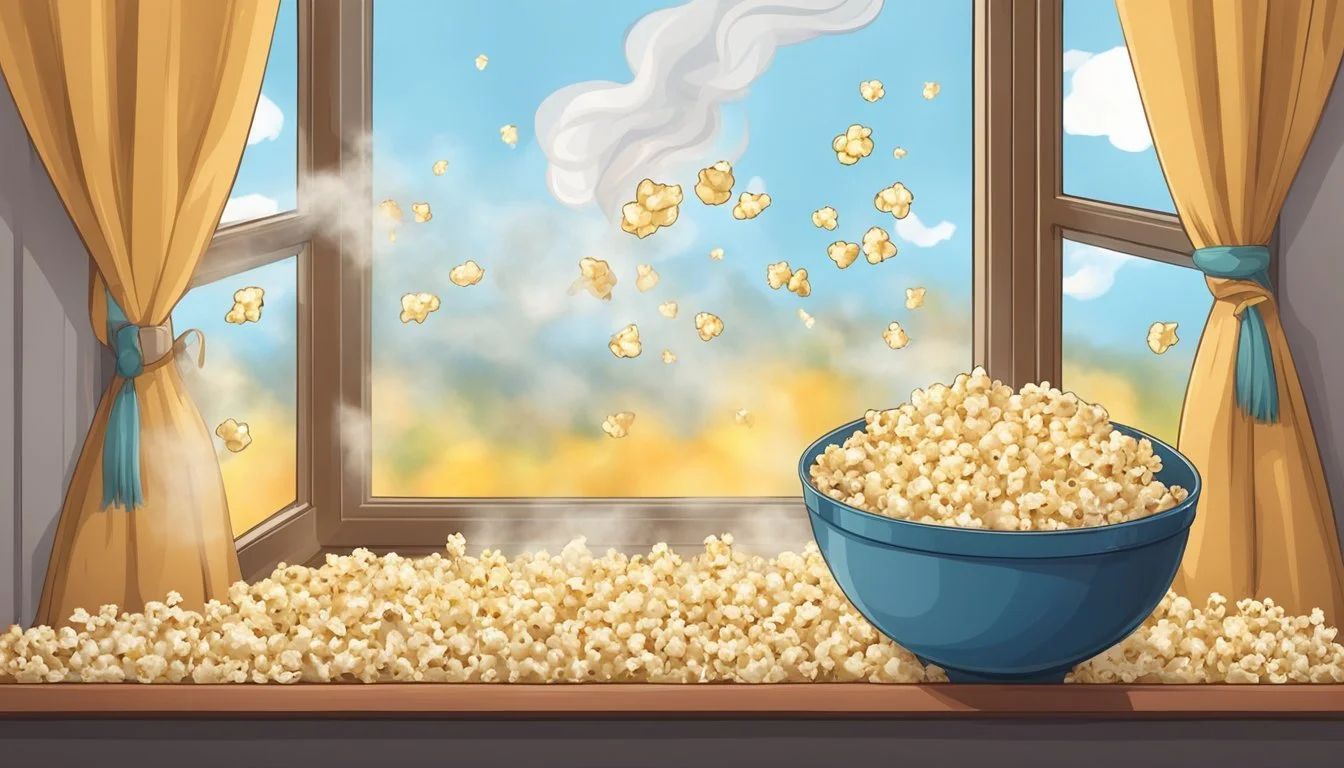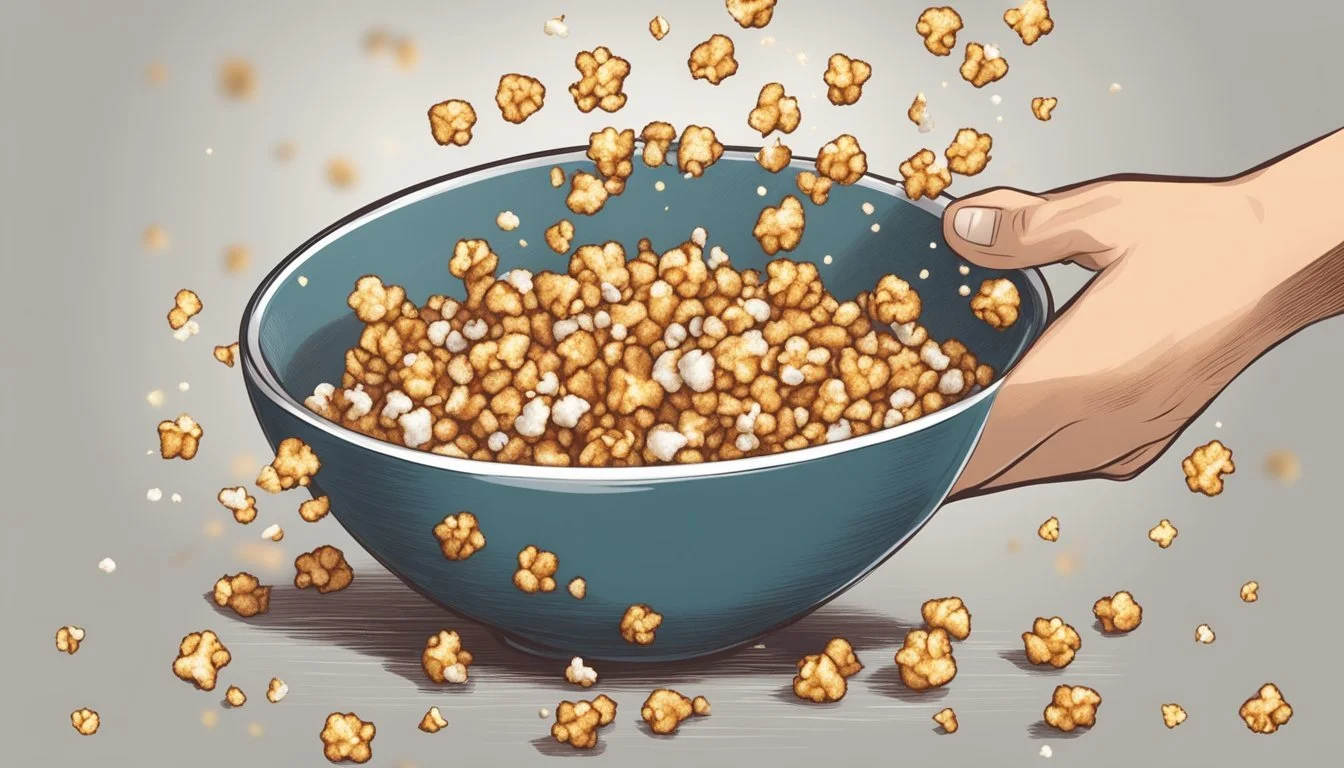Saving Burnt Popcorn
Tips for Neutralizing Bitter Taste and Enhancing Remaining Flavors
Popcorn is a beloved snack enjoyed by people worldwide for its light, fluffy texture and versatility in flavor. However, the experience of making popcorn at home can sometimes lead to an unintended mishap—burnt popcorn. The taste of burnt popcorn can be intensely bitter, permeating every kernel with an off-putting flavor that seems irredeemable. Yet, with proper techniques, it is possible to mitigate the bitterness and salvage much of the snack's original charm.
When popcorn burns, the flavor compounds that typically create the appealing popcorn taste change into acrid, bitter substances. This transformation not only affects the burnt kernels but can also affect the still-good popcorn due to the strong odor and taste. Despite this, there are measures one can take to reduce the impact of scorched kernels. By understanding the factors that lead to burning and implementing timely interventions, the chances of rescuing the remaining unburnt popcorn increase.
Addressing the challenge of burnt popcorn involves a keen sense of timing and a willingness to discard the irreversibly burnt kernels to protect the rest of the batch. The key lies in swift separation, venting to dissipate the unpleasant aroma, and leveraging other flavors to mask any residual bitterness. This approach gives popcorn enthusiasts a fighting chance to save their snack and enjoy it with minimal disruption from the accidental charring.
Understanding Popcorn Burn
When popcorn is overcooked, it undergoes chemical changes that result in a burnt taste and unpleasant smell, compromising its status as a beloved snack.
Chemistry of Burnt Popcorn
The key culprit behind the burnt flavor is the Maillard reaction, which occurs when the sugars and amino acids in popcorn are heated above 140°C (284°F). Typically, this reaction contributes to the desirable flavor in toasted and baked foods. However, when popcorn is overheated, the reaction progresses to an undesirable extent, where the sugars and amino acids break down further to create bitter-tasting compounds. Additionally, the thermal decomposition of the cellulose in popcorn kernels at high temperatures results in a charred texture and taste, leading to the release of compounds that cause an unpleasant smell.
Compounds associated with burnt taste and smell:
Acrylamide
Hydroxymethylfurfural (HMF)
Phenols
Effects of Overcooked Popcorn
When popcorn is overcooked, it not only changes flavor but also presents several issues:
Taste and Texture: Burnt popcorn exhibits a hard, crispy texture and carries a strong bitter aftertaste that overpowers the natural, slightly sweet taste of properly popped kernels.
Smell: The same chemical reactions that affect flavor also lead to the release of volatile compounds into the air, resulting in an unpleasant smell that can linger in an environment if not properly ventilated.
Food Quality: Overcooked popcorn turns from a light, fluffy snack into an unappetizing food item with a compromised nutritional value, as some beneficial compounds might get destroyed at high temperatures.
Safety Concerns: Consuming large amounts of burnt popcorn may pose health risks since burnt food can sometimes contain harmful substances.
To maintain the integrity of their favorite snack, one must monitor the cooking process closely to prevent overcooking, which will avert the associated negative impacts on taste, texture, smell, and overall enjoyment of popcorn.
Prevention Strategies
Taking a proactive approach to making popcorn can ensure a delightful snacking experience without the unwelcome burnt taste. One can avoid most popcorn mishaps with careful attention to cooking times and methods.
Microwave Monitoring
When using a microwave to make popcorn, it is essential to not solely rely on the preset time. Since microwaves vary greatly in wattage, users should listen carefully to the frequency of popping. Once the pops slow to about two seconds apart, it's time to stop the microwave. This can prevent overcooking which leads to a burnt flavor.
Kernel Attention
Selecting high-quality microwave popcorn brands can reduce the chance of unpopped kernels that may burn and lend a bitter flavor. For stovetop preparation, heat a good-quality oil and add a test kernel. When it pops, add the rest of the popcorn kernels, ensuring to shake the pot occasionally. This keeps the heat evenly distributed and reduces the odds of scorching.
Salivating Flavor
Reviving the taste of burnt popcorn calls for a keen approach to remove the charred pieces and artfully add enhancements that mask the burnt flavor. By doing so, the popcorn’s appeal is restored, making it enjoyable once again.
Removal of Burnt Pieces
The first step in salvaging the flavor of popcorn involves the careful removal of any burnt kernels or pieces that could impart further bitterness. They should carefully separate out the darkest kernels, as these are indicators of the most severe burning and will be the harshest in taste.
Visual Inspection: Single out any visibly burnt popcorn.
Texture Assessment: Discard pieces that are notably harder or excessively chewy, as this texture indicates overcooking.
Flavor Enhancement
Once the burnt pieces are removed, one can work on enhancing the remaining popcorn's flavor. There are several methods they can employ:
Salt: A sprinkle of salt can help balance the taste and bring out the popcorn's inherent flavor.
Sugar: For those who have a sweet tooth, a dash of sugar or a sugar-based seasoning blend can mask the remnant burnt flavor.
Olive Oil: Lightly drizzling olive oil on the popcorn not only adds a nuanced taste but also helps other flavorings stick to the popcorn.
Spices and Herbs: Incorporating spices like paprika or herbs like rosemary gives a new dimension to the popcorn's flavor profile.
One should also consider the health aspect, opting for seasonings that do not contribute to excessive calorie intake. An emphasis should be on using natural and, if possible, organic enhancers to keep the snack healthy.
Neutralizing Odors
When dealing with the aftermath of burnt popcorn, effectively neutralizing odors is crucial. Certain natural ingredients and household mixtures can be employed to tackle the unpleasant aroma, restoring freshness without the use of harsh chemicals.
Natural Odor Absorbers
Natural ingredients can be very effective in absorbing the strong scent caused by burnt popcorn. Baking soda is a notable odor absorber, often used for its neutralizing properties. Placing a bowl of baking soda near the affected area can help to diminish the bad smell. Similarly, coffee grounds contain compounds that can absorb and neutralize odors, leaving a pleasant coffee scent behind.
Natural Absorbers Description Baking Soda Place in a bowl near the source of the odor. Coffee Grounds Can be spread on a tray and left out in the room.
Additionally, lemon juice has a high acid content, which not only helps in breaking down odor-causing molecules but also leaves a fresh citrus aroma. On the other hand, leaving a bowl of vinegar out in the affected area can help neutralize the odorous molecules in the air.
Deodorizing Mixtures
Creating deodorizing mixtures can also help to neutralize and remove the smell of burnt popcorn. A tried and tested method includes simmering a mixture of equal parts water and vinegar on the stove, which disperses steam that helps carry away the bad odors. For a more pleasant scent post-deodorization, adding a few drops of vanilla extract can introduce a warm and comforting aroma to the space.
Using a sponge dampened with a solution made up of vinegar and baking soda can help clean and deodorize the interior of a microwave or oven where the popcorn was burnt.
Deodorizing Mixtures Instructions Vinegar and Water Steam Simmer equal parts on the stove to disperse steam. Vinegar and Baking Soda Use to scrub and deodorize surfaces. Vanilla Extract Add to mixtures for a pleasant after-scent.
Utilizing these methods, one can restore clean air to their environment and remove the evidence of a popcorn mishap.
Cleaning Strategies
Effective cleaning strategies are essential for removing the scent of burnt popcorn and salvaging the flavor of any remaining snack. These methods not only target the residual odor but also emphasize maintaining the cleanliness and hygiene of the cooking space.
Kitchen Surfaces
To clean kitchen surfaces after a popcorn mishap, one should initially wipe down all countertops and stovetops with a solution of warm water and dish soap to remove grease and food particles. A mixture of water and vinegar in a 3:1 ratio can be used as a natural deodorizing agent. Spray the solution on the surfaces, then rinse with water and dry with a clean cloth.
Steps for Cleaning Kitchen Surfaces:
Mix warm water with dish soap.
Wipe down surfaces to remove residue.
Combine 3 parts water with 1 part vinegar.
Spray and wipe with the vinegar solution.
Rinse with water and dry.
Microwave Care
To tackle odors inside a microwave, one can boil a solution of water and lemon juice for 5 minutes, allowing the steam to loosen any food particles and absorb odors. Another method is mixing baking soda with water to create a paste, and then microwaving this mixture for 5 minutes to neutralize smells.
Lemon water method:
Squeeze a fresh lemon into a bowl of water.
Microwave for 5 minutes, let steam circulate.
Carefully remove and wipe the interior.
Baking soda method:
Mix baking soda with water to form a paste.
Microwave for 5 minutes.
Wipe clean with a damp cloth.
Air Quality Improvement
Air quality is paramount when salvaging flavor from burnt popcorn. One must remove the acrid smoke smell to ensure a breathable environment conducive to flavor recovery.
Enhancing Air Circulation
Optimal air circulation is essential for dispelling dense smoke odors. Fans, especially ceiling fans, should be employed immediately to facilitate the dispersion of smoke. Strategically placing fans near windows can help direct the polluted air outside, ensuring a continual flow of fresh air through the affected area.
Using Fresheners
In conjunction with air circulation, aromatic substances can mask and neutralize the harshness of burnt odors. One may use essential oils to imbue the air with a refreshing fragrance. Practically, placing bowls of vinegar around the room, or heating a mix of water and lemon in the microwave can act as a natural deodorizer. For long-lasting effects, commercially available air fresheners can provide a variety of scents to enhance the room's ambience.
Alternative Solutions
When burnt popcorn leaves an unwanted bitter taste, one can employ alternative solutions to mask the bitterness or repurpose the popcorn creatively.
Masking Techniques
Masking the burnt flavor of popcorn is often the first line of defense. Individuals can use lemon to spritz over the popcorn, with its citric acid working to neutralize the bitterness. Additionally, integrating flavors like cinnamon can help. For example, one could sprinkle a mixture of cinnamon and sugar onto the popcorn for a sweet twist. Here are common masking agents:
Lemon juice: Neutralizes burnt flavors
Cinnamon: Adds a warming, sweet layer
People might also consider turning the popcorn into a sweet or savory mix. When they add ingredients such as chocolate, nuts, or cheese, it can help in disguising the burnt taste effectively.
Creative Uses for Burnt Popcorn
Instead of discarding burnt popcorn, some creative uses can help one salvage the situation. An unconventional yet inventive idea is to grind the popcorn and use it as a crunchy topping on dishes like cinnamon rolls or an incorporated element in cornbread. Additionally, burnt popcorn can act as a flavoring agent to create unique infusions, especially in cooking stocks or broths, where the smokiness might be an asset. Here's a quick table of creative repurposing ideas:
Use Case Description Crunchy Toppings Grind and sprinkle over baked goods for added texture. Smoky Infusions Steep in stocks for a smoky undertone in soups and stews. Popcorn Seasoning Mix with herbs and use as a seasoning for meals.
Lastly, burnt popcorn could be a curious addition to a drink garnish, where its smoky flavor could complement certain cocktails or mocktails, provided one handles the garnish with inventiveness and moderation.
Conclusion
Experiencing a burnt taste in popcorn signals a common mishap in the kitchen. High-quality popcorn and careful timing are key to avoiding this issue. However, if one encounters burnt popcorn, several measures can help mitigate the bitterness and improve the overall flavor.
Preventive Measures:
Use a heavy-bottomed pot to ensure even heat distribution.
Continuously shake the pot over the stove to prevent the kernels from settling and burning.
Listen for the popping to slow down, indicating it's time to remove from heat.
Salvage Tactics:
For Mild Cases: Remove any visibly burnt kernels to minimize the spread of a smoky flavor.
For Severe Cases: It's usually best to start over to ensure a pleasant snacking experience.
Remember that burnt popcorn might carry a health risk if it's a recurrent issue, as acrylamide, a compound formed in some foods during high-temperature cooking processes, can be harmful over time.
In any food preparation, attentive cooking and a willingness to adapt techniques are one's best tools for ensuring delicious results. With popcorn, these simple adjustments not only prevent a burnt outcome but can also enhance the satisfaction of a perfectly made snack.









